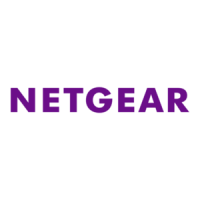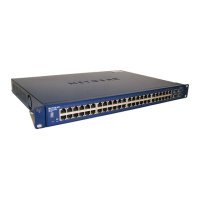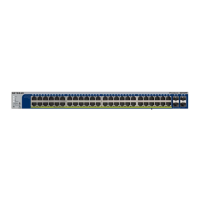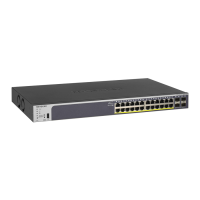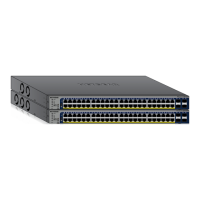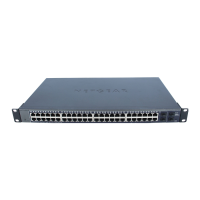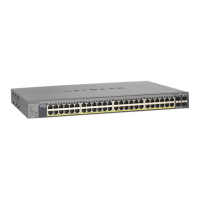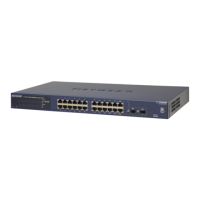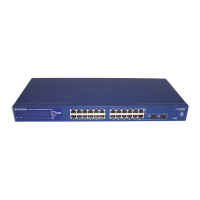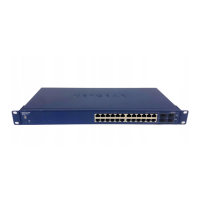281
GS716T and GS724T Gigabit Smart Switches
VLAN Example Configuration
This example demonstrates several scenarios of VLAN use and describes how the switch
handles tagged and untagged traffic.
In this example, you create two new VLANs, change the port membership for default
VLAN
1, and assign port members to the two new VLANs:
1. In the Basic VLAN Configuration screen (see VLAN Configuration on page 89), create
the following VLANs:
• A VLAN with VLAN ID 10.
• A VLAN with VLAN ID 20.
2. In the VLAN Membership screen (see VLAN Membership Configuration on page 90) specify
the VLAN membership as follows:
• For the default VLAN with VLAN ID 1, specify the following members: port 7 (U) and
port 8 (U).
• For the VLAN with VLAN ID 10, specify the following members: port 1 (U), port 2 (U),
and port 3 (T).
• For the VLAN with VLAN ID 20, specify the following members: port 4 (U), port 5 (T),
and port 6 (U).
3. In the Port PVID Configuration screen (see Port VLAN ID Configuration on page 92), specify
the PVID for ports g1 and g4 so that packets entering these ports are tagged with the port
VLAN ID:
• Port g1: PVID 10
• Port g4: PVID 20
4. With the VLAN configuration that you set up, the following situations produce results as
described:
• If an untagged packet enters port 1, the switch tags it with VLAN ID 10. The packet
has access to port 2 and port 3. The outgoing packet is stripped of its tag to leave port
2 as an untagged packet. For port 3, the outgoing packet leaves as a tagged packet
with VLAN ID 10.
• If a tagged packet with VLAN ID 10 enters port 3, the packet has access to port 1 and
port 2. If the packet leaves port 1 or port 2, it is stripped of its tag to leave the switch
as an untagged packet.
• If an untagged packet enters port 4, the switch tags it with VLAN ID 20. The packet
has access to port 5 and port 6. The outgoing packet is stripped of its tag to become
an untagged packet as it leaves port 6. For port 5, the outgoing packet leaves as a
tagged packet with VLAN ID 20.
